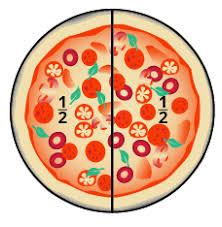EDU A130 Session 11 A130 Assignment
Ryan JungIntroductory activity:

“Divide and choose”: Bring food that can be easily divided in half to the class, e g an uncut cake or pizza Choose two (hungry) volunteers to demonstrate the process, with the teacher faciltating:
Two friends (Jack and Jill) must share a pizza together Pizza is Jack’s favorite food, and Jill’s too – how should they go about splitting it up?
Let students think and discuss; field suggestions, and if there are enough pizzas, try some of their strategies out. Then, introduce the “divide and choose” method: Jack must cut the pizza in two However, Jill gets to choose which slice she gets first. The predicted outcome? Jack will cut the pizza in half, and they will both enjoy equal parts of the pizza
This ends the activity. Cut the pizza(s) in equal slices to share with the entire class.
QFocus:
Gutman Elementary has brand new jump rope and basketballs students can use at recess. Meanwhile, Robbins Elementary’s jumprope isn’t any good for Double Dutch, and its basketballs don’t bounce You know you’ll attend Gutman or Robbins, but you don’t know where you’ll end up.
(If students ask for clarification, they must attend the school in the neighborhood they live in –no transferring!)
Prioritization instructions:
Choose three questions that are most relevant to what you know about fairness
Reflection questions:
● How did you feel about the situation after it was presented (i e , initial reaction)?
○ What details in the situation made you feel that way?
● Did you find the situation fair? Unfair?
○ What details in the situation made you think it was (un)fair?
● What are you still wondering about?
Guiding thinkers and concepts:
Justice: Fairness; securing outcomes which favor everyone equally Rawls’ A Theory of Justice: A 1971 work by John Rawls in which he develops principles for how to arrange a society founded on the principle of justice. Articulates just arrangements for social and political institutions along three guiding principles.
Original position: Thought experiment advanced by Rawls: one must imagine herself without prior knowledge of aspects of her social identity, such as ability, wealth, race, etc. (veil of ignorance), and develop a set of principles that would ensure the best outcomes for her when the veil is lifted This can be another activity to do with students
Three principles of justice: (1) basic political liberties, such as freedom of speech, consicence, and association (because no one reasonably would want to be born without basic liberties); (2) positions – for instance, jobs, political positions – that are open to all, free of discrimination (because reasonable people under the veil would want to have the opportunity to pursue their desired ends); (3) distributing goods (e g money, social services) to benefit the least advantaged (because under the veil, reasonable people would desire assistance if they ended up at the bottom of the economic ladder)
Natural duty: What we owe one another by virtue of being human; namely, a duty to help those in need, a duty not to act with gratuitous harm or disrespect, and a duty to assist in the establishment of just arrangements
